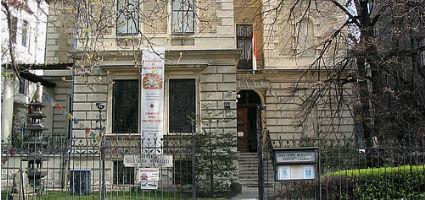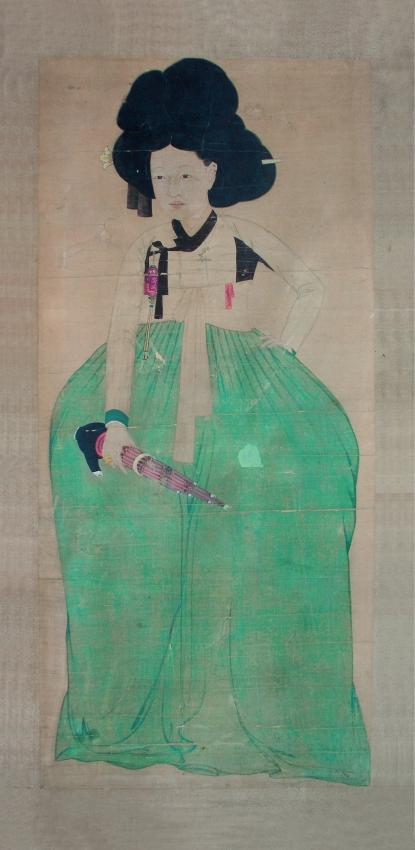2025. July 3. Thursday
Ferenc Hopp Museum of Asian Arts - Budapest
 |
Address: 1062, Budapest Andrássy út 103.
Phone number: (1) 322-8476
E-mail: hoppmuseum@hoppmuseum.hu
Opening hours: Mon-Sun 10-18
|
The exhibition has closed for visitors.
2011.06.21. - 2012.09.30.
Museum tickets, service costs:
|
Ticket for adults
|
1000 HUF
|
|
|
Ticket for students
|
500 HUF
|
|
|
Ticket for pensioners
|
550 HUF
|
The Hopp Ferenc East-Asia Museum of Art launches a temporary exhibition presenting the extremely exciting culture of Korea. Interiors, ceremonial clothing and ornamented objects represent Korean art.

Art in Korea was influenced by China and various neighbouring people. The last Korean dynasty, the Joseaon Dynasty ruled over the country for over five-hundred years (1392-1910). However, this period is divides Korean history: the early era was the 14-16th century, the second the 17-20th century. During these periods, independent Korean culture was in the focus, it was the beginning of dynastic historiography, and introduction of Korean letter characters. A culture of Korean literate officials formed, heralding the priority of painting, calligraphy and poetry. In the 18th century, portrait painting was highlighted, often portraying everyday life satirically. The most outstanding architectural achievement of the Joeson-era in the 17th century was the Gyeongbokgung Palace.
Symbolic accessories: hem and rooster in hamstring
Traditional Koran furniture making was functional, with elaborate ornaments. People sat on the floor in houses as they were floor heated. in houses of the people of high rank, men and women lived in different parts of the house, which mainly differed in their furnishing and ornaments.
Marriage in Korea, where tradition is highly esteemed, was regulated. The parents chose spouse for the to-be-married and the two families signed a contract. The ceremony was performed in the home of the bride when the signs, omens were good and the motion of the moon was favourable. A tent was set up in the yard and a ceremonial large table was to be found in the largest room, with a mat underneath. They put two vases on the table, one with a pine branch in it, the other with a bamboo in it. There were also two candle holders, fruit on trays, cookies, chestnut, dates, and jujube. A hen and a roster tied up in a shawl were also their as symbolic accessories. The hen was placed opposite the bride, the rooster the groom. First the bride bowed to the groom, then the groom bowed to the bride. Then, the whole process was repeated again. The ceremony ended with the young couple greeting each other with rice wine.
Hungarian Travellers in Korea
Several Hungarian travellers visited Korea in the second half of the 19th century, most of them in search of the origins of Hungarians. Just a few name of those who visited Korea in the 19-20th century: Dr. the surgeon Ferenc Gáspár, the bishop Péter Gróf Vay, the founder of our museum Ferenc Hopp, the linguist Benedek Barátosi Balogh, the surgeon for the Austro-Hungarian Monarchy dr. Dezső Bozóky.

Art in Korea was influenced by China and various neighbouring people. The last Korean dynasty, the Joseaon Dynasty ruled over the country for over five-hundred years (1392-1910). However, this period is divides Korean history: the early era was the 14-16th century, the second the 17-20th century. During these periods, independent Korean culture was in the focus, it was the beginning of dynastic historiography, and introduction of Korean letter characters. A culture of Korean literate officials formed, heralding the priority of painting, calligraphy and poetry. In the 18th century, portrait painting was highlighted, often portraying everyday life satirically. The most outstanding architectural achievement of the Joeson-era in the 17th century was the Gyeongbokgung Palace.
Symbolic accessories: hem and rooster in hamstring
Traditional Koran furniture making was functional, with elaborate ornaments. People sat on the floor in houses as they were floor heated. in houses of the people of high rank, men and women lived in different parts of the house, which mainly differed in their furnishing and ornaments.
Marriage in Korea, where tradition is highly esteemed, was regulated. The parents chose spouse for the to-be-married and the two families signed a contract. The ceremony was performed in the home of the bride when the signs, omens were good and the motion of the moon was favourable. A tent was set up in the yard and a ceremonial large table was to be found in the largest room, with a mat underneath. They put two vases on the table, one with a pine branch in it, the other with a bamboo in it. There were also two candle holders, fruit on trays, cookies, chestnut, dates, and jujube. A hen and a roster tied up in a shawl were also their as symbolic accessories. The hen was placed opposite the bride, the rooster the groom. First the bride bowed to the groom, then the groom bowed to the bride. Then, the whole process was repeated again. The ceremony ended with the young couple greeting each other with rice wine.
Hungarian Travellers in Korea
Several Hungarian travellers visited Korea in the second half of the 19th century, most of them in search of the origins of Hungarians. Just a few name of those who visited Korea in the 19-20th century: Dr. the surgeon Ferenc Gáspár, the bishop Péter Gróf Vay, the founder of our museum Ferenc Hopp, the linguist Benedek Barátosi Balogh, the surgeon for the Austro-Hungarian Monarchy dr. Dezső Bozóky.
